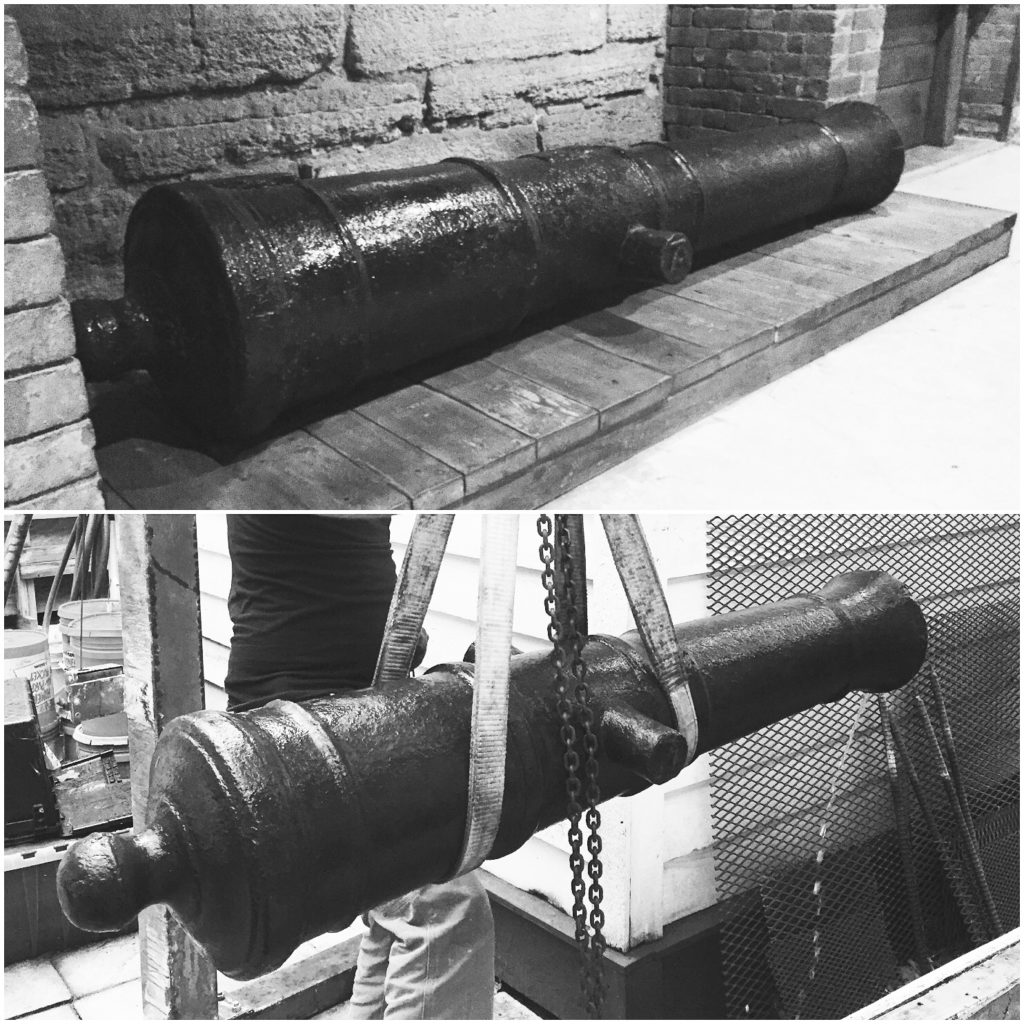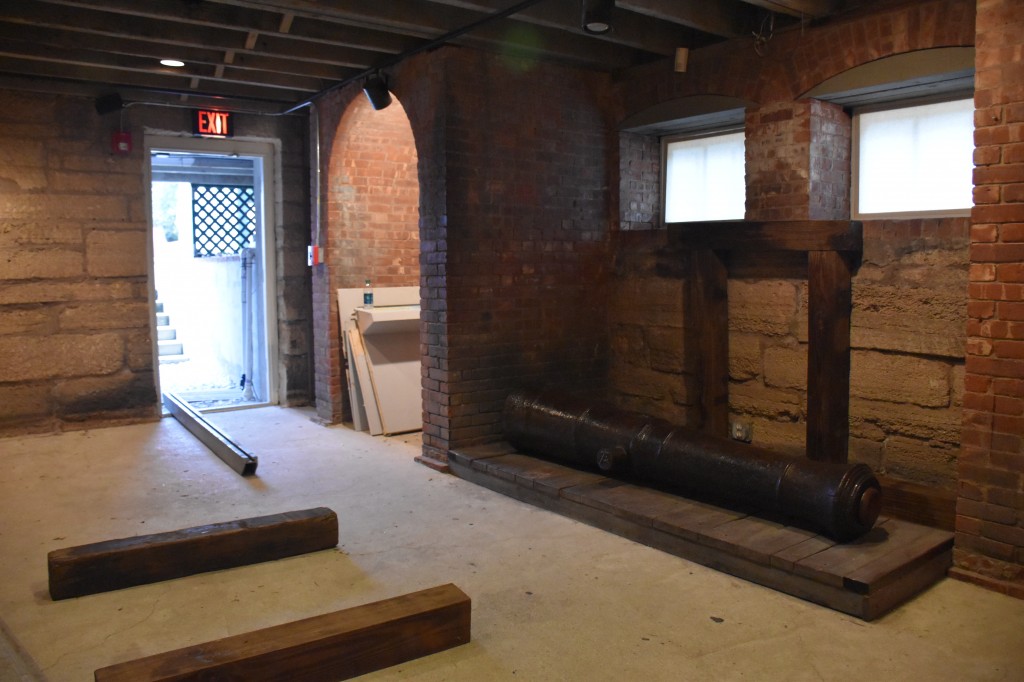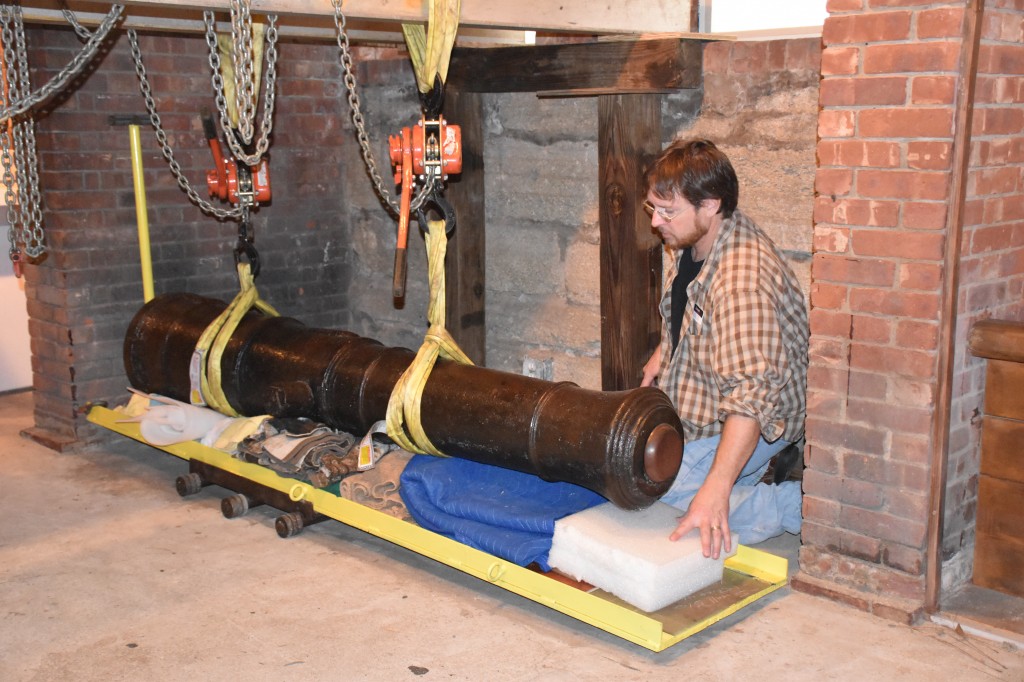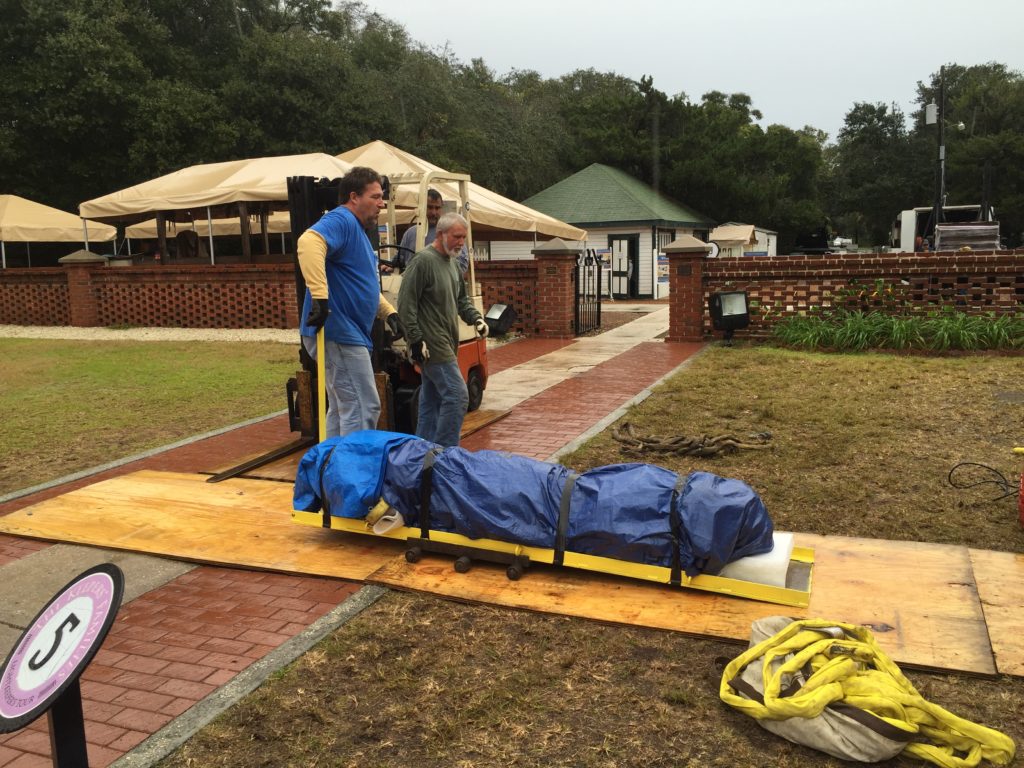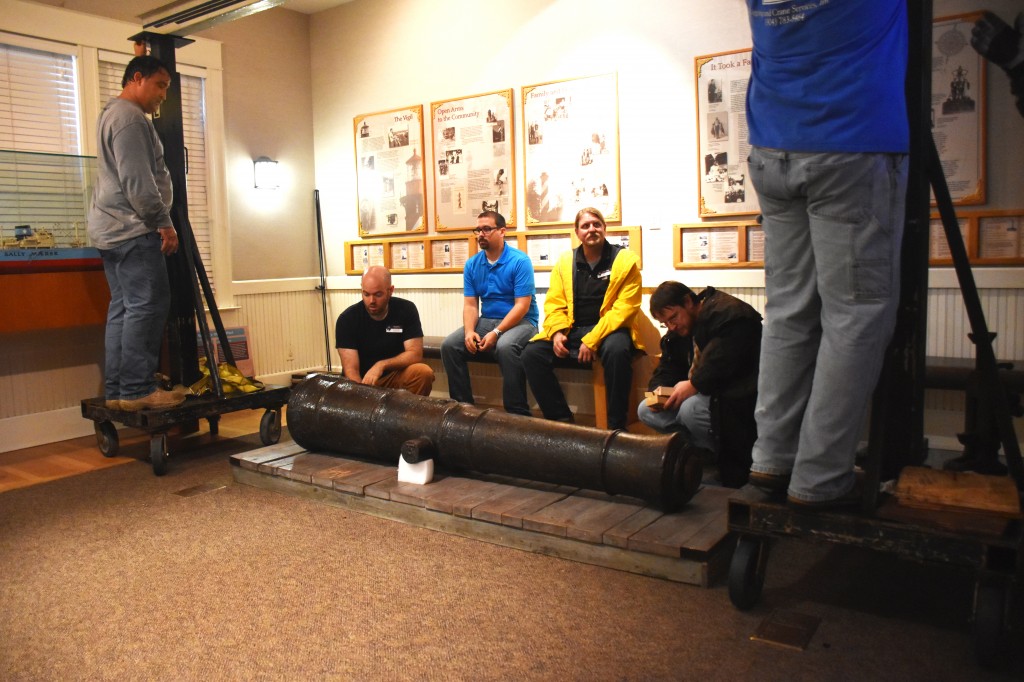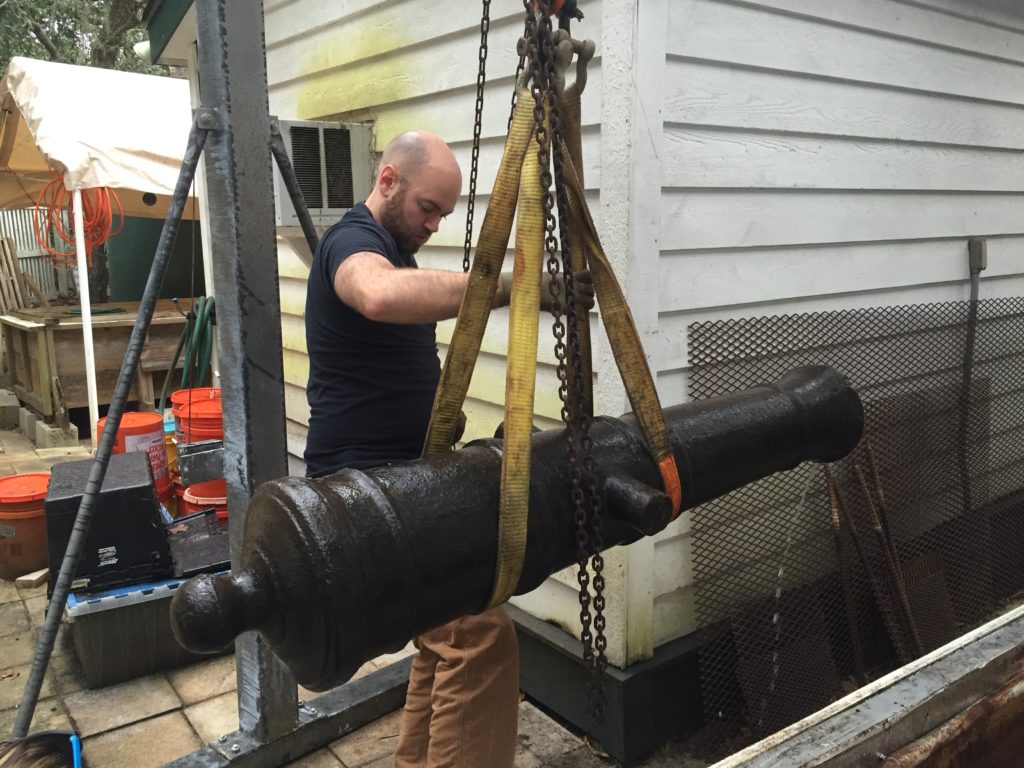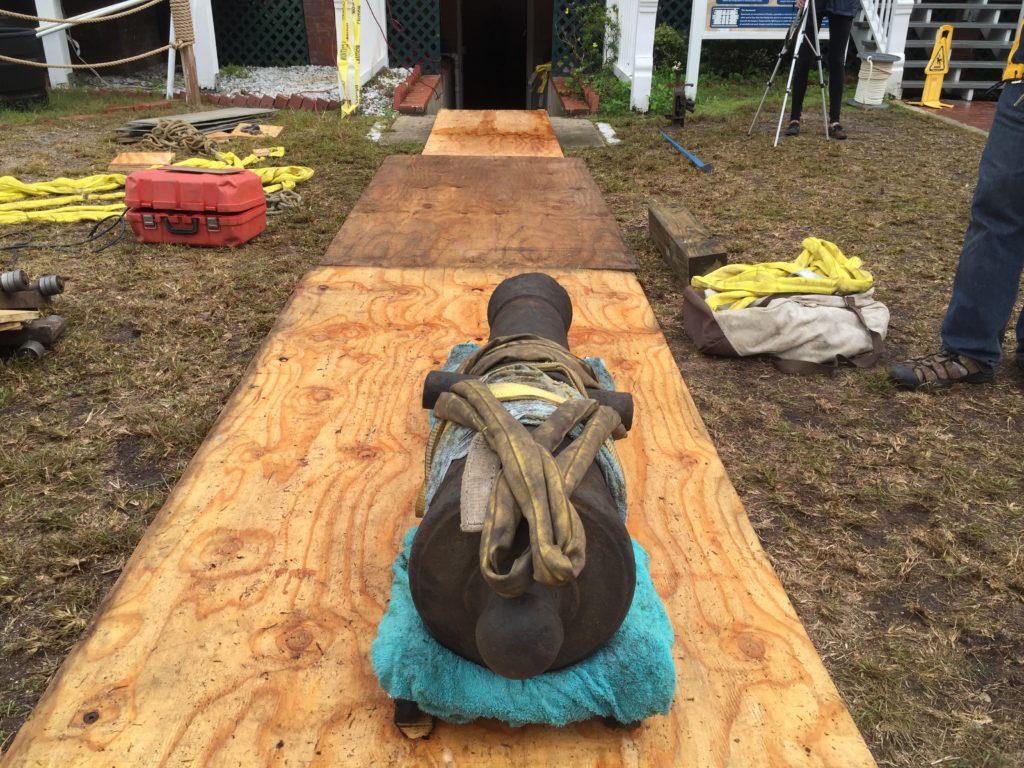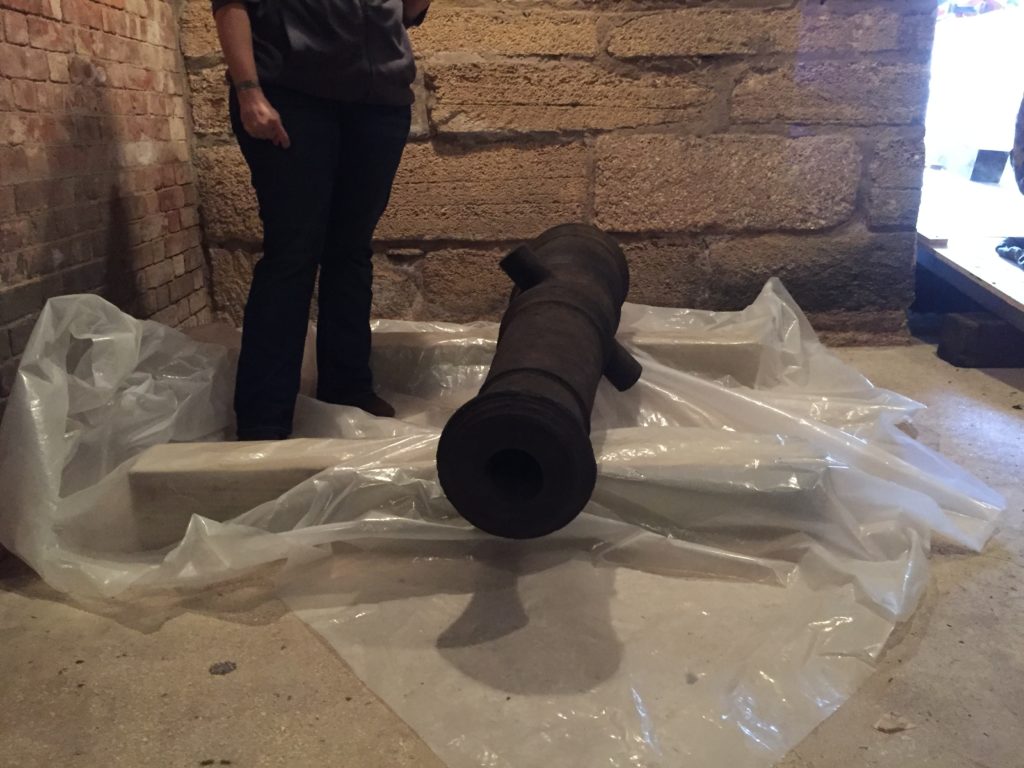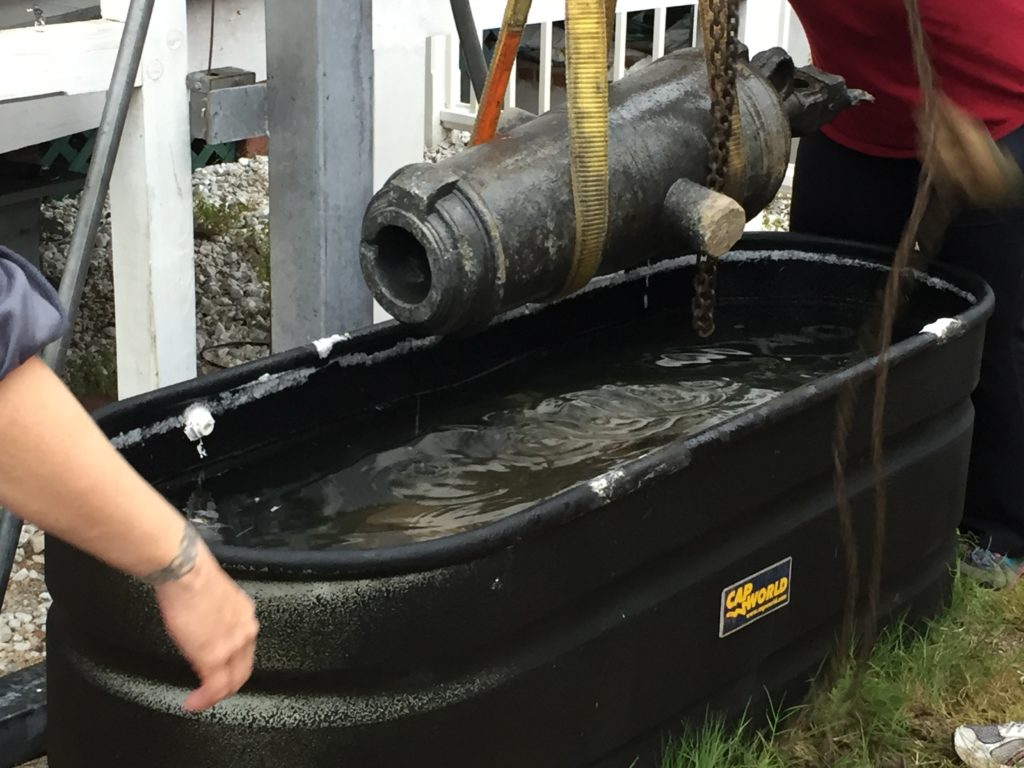What does it take to build a brand new museum exhibit? Over the next few months, we’re going to give you exclusive access behind the scenes as our team works together to createWrecked! a new experience coming to the St. Augustine Lighthouse & Maritime Museum in May 2016.
» Read our first entry “Boxes & Beginnings”
Fact: Cannons are really heavy
Imagine this scenario: You have a delicate, 18th century cannon that ways a ton (literally, it weighs about 2,000 lbs.) located in the basement of an equally delicate 19th century historic building and you need to move it.
Oh, but that’s just the first cannon.
Yeah, that’s right, there’s TWO of them. The second one isn’t as heavy as the first (only around 1,000 lbs.) but it’s got to go into the basement in place of the larger cannon.
Who you gonna call?
(No, it’s not who you think — but we do have those guys on speed dial for other reasons…)
Our staff has moved a few cannons on occasion, but for this big step in preparing for our new exhibit, we knew right away that this task would require some additional help.
Thankfully, the fantastic team at Nieman & Co. Rigging and Crane Services, Inc. was up to the task. These guys are experts in moving big objects — they’ve transported everything from ancient sculptures to nuclear submarine simulators.
With our grant support from the Department of State, Division of Historical Resources and the State of Florida, we hired the team at Nieman to come in and help us relocate two of the biggest pieces in our Museum collection to their new homes, respectively.
Wait, why did we have to move cannons in the first place?
Well, as part of our preparations for the new Wrecked! exhibit, we first had to clear out the artifacts and interpretation pieces from our last shipwreck exhibit, the Industry. The Industry was the very first full underwater excavation project conducted by our research arm, the Lighthouse Archaeological Maritime Program (LAMP) shortly after it was established in 1999.
The supply ship Industry sank in 1764, right as Great Britain took control of St. Augustine from Spain, per the 1763 Treaty of Paris. Artifacts gathered from that shipwreck for our exhibit included cauldrons, irons, tools, a swivel gun, and one enormous cannon.
For the last ten years, the Industry cannon has been on display in the Keepers’ House basement. Now that we need the space to tell another shipwreck story, we decided to relocate the Industry cannon into our Visitors’ Center where everyone can still enjoy it (and get a little taste of the incredible maritime archaeology available throughout our campus!).
But getting it from the basement to the Visitors’ Center — that’s the real story.
Measure twice, move once
Our friends from Nieman & Co. had to construct a ramp over the exterior stairs into the basement and use a small forklift to wench the Industry cannon up and out of the basement.
Did I mention it was raining that day, too?
Fortunately, our moving crew was so professional and experienced that a few raindrops weren’t a hurdle for them at all. Our conservation team carefully wrapped the cannon for extra protection before it was pulled up the ramp and into the Lighthouse courtyard. From there, we carefully rolled it down the path to our Visitors’ Center and used a gantry to lift it up and put it back onto its display stand.
Here, these pictures tell the story better than I can:
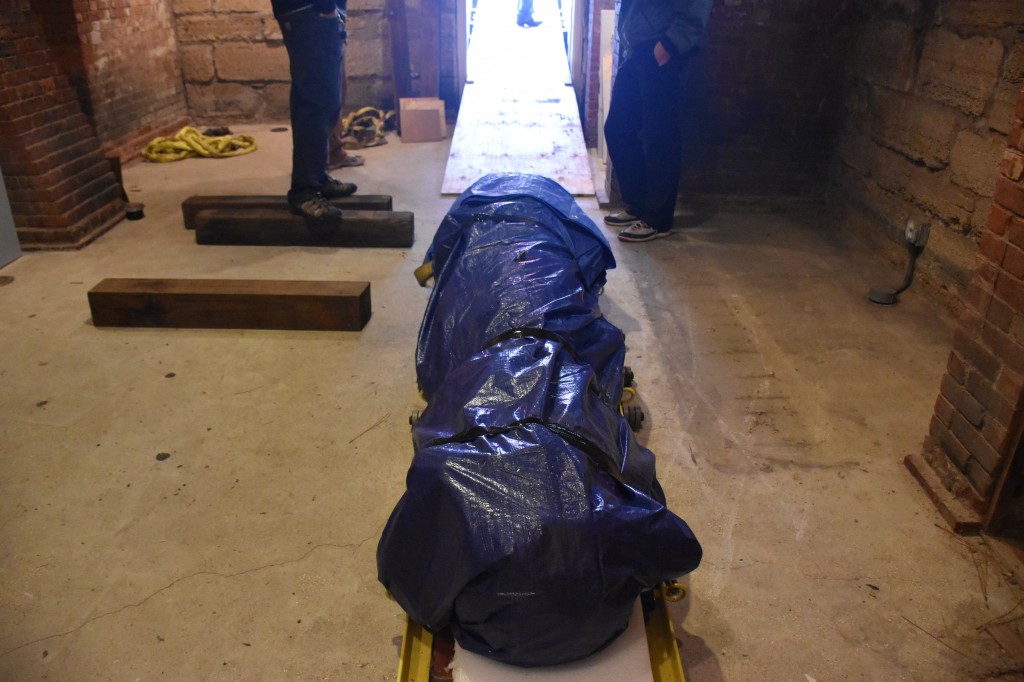
Wrapped up to protect against the rain, the Industry cannon is ready to ascend a temporary ramp into the Lighthouse courtyard!
Next up: Moving the Wrecked! Cannon
With the Industry cannon secured in its new location, we turned our attention to the cannon recovered from the 1782 British Loyalist wreck that will be the focus of our new Wrecked! exhibit.
The Wrecked! cannon has spent about a month undergoing a hot bath (sounds nice, right?) that will boil away the last of the corrosive salt and other elements that got inside the metal while it was sitting on the ocean floor for over 200 years. Using another gantry, we raised the cannon from the hot bath and lowered it onto a cart for transport.
Using the same ramp that was built to raise the Industry cannon, we carefully lowered the Wrecked! cannon into the basement of our 1876 Keepers’ House. From there, our conservation staff will finish cleaning, painting, and sealing the cannon in preparation for the new exhibition.
Wait — surprise! There’s one MORE cannon!
A week after we relocated the Industry and Wrecked! cannons, we finished our cannon moving trifecta by switching the carronade from its vat in the Lighthouse courtyard to the hot bath for boiling.
The carronade was also recovered from the 1782 British Loyalist shipwreck, and though it’s smaller in size than the long gun, it was actually more powerful. It’s also the second oldest carronade in existence (the Tower of London has the oldest).
This piece will play a key role in the traveling Wrecked! exhibit that we will put together in the next few years (so it could be coming to a city near you!).
Fortunately, the carronade only weighs about 500 lbs., so after our experiences with the two other cannons, this one was a cakewalk.
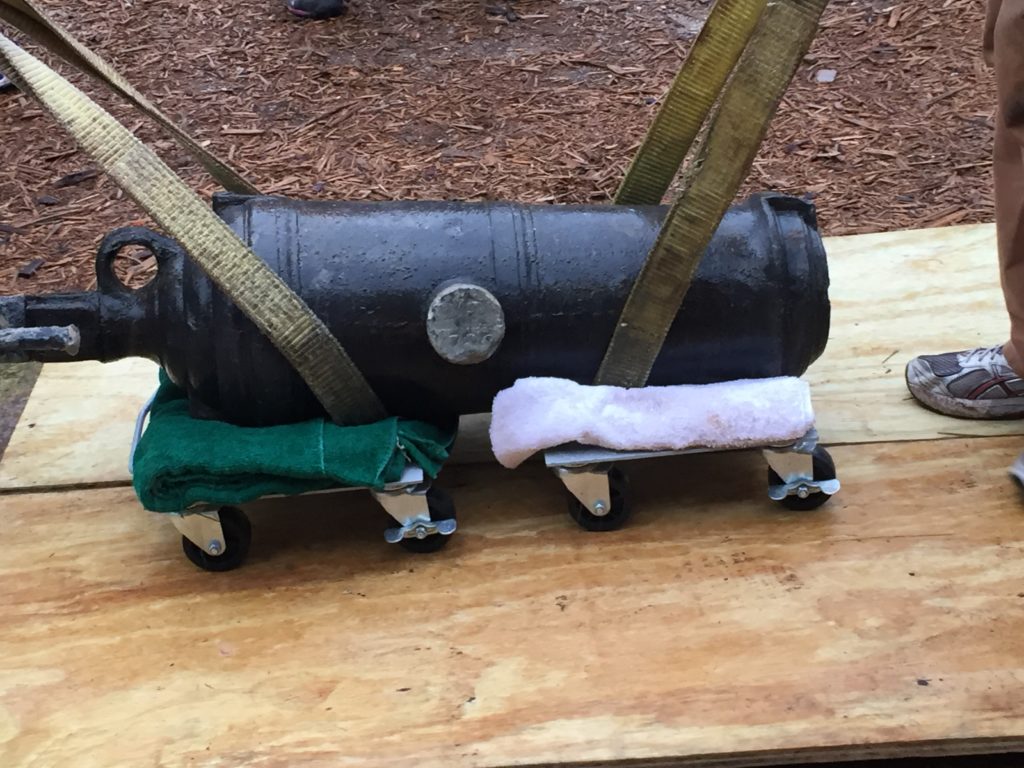
A short roll across campus brought the carronade to its second-to-last conservation step in the hot bath.
Phew! That’s a lot of moving!
In addition to the cannons, we also relocated several historic Lighthouse lenses on loan to us from the U.S. Coast Guard into our Visitors’ Center. Things are shaping up so that our exhibit installation crew will have a nice, blank slate to begin creating the Wrecked! experience.
» Read the next entry: New Reflections
This project is sponsored in part by the Department of State, Division of Historical Resources, and the State of Florida.
Shannon O’Neil, Director of Public Relations, joined the St. Augustine Lighthouse & Maritime Museum team in 2013. She is a native of St. Augustine and holds two degrees from Florida State University.


